Senior Design 2025
BE Showcase (Hybrid) - April 25, 2025, 1:00 pm
116 Farrall Hall or click to join https://msu.zoom.us/j/97714737403
Click for pdf program
A Showcase of the Program and Students
April 25, 2025
Presented by
Faculty and Students in the Biosystems Engineering Program
College of Engineering & College of Agriculture and Natural Resources
Michigan State University
Design Day Poster Session 1st floor Engineering Building
- 8:00-10:00 am
Individual Senior Design Team Evaluations (Industry Advisory Board, Industry Evaluators, and Project Sponsors by Invitation Only)
- 10:30-11:00 am & 11:15-11:45 am Individual Senior Design Team Evaluations
BE 230 Poster Session 1st floor Farrall Hall
- 12:35-1:30 pm
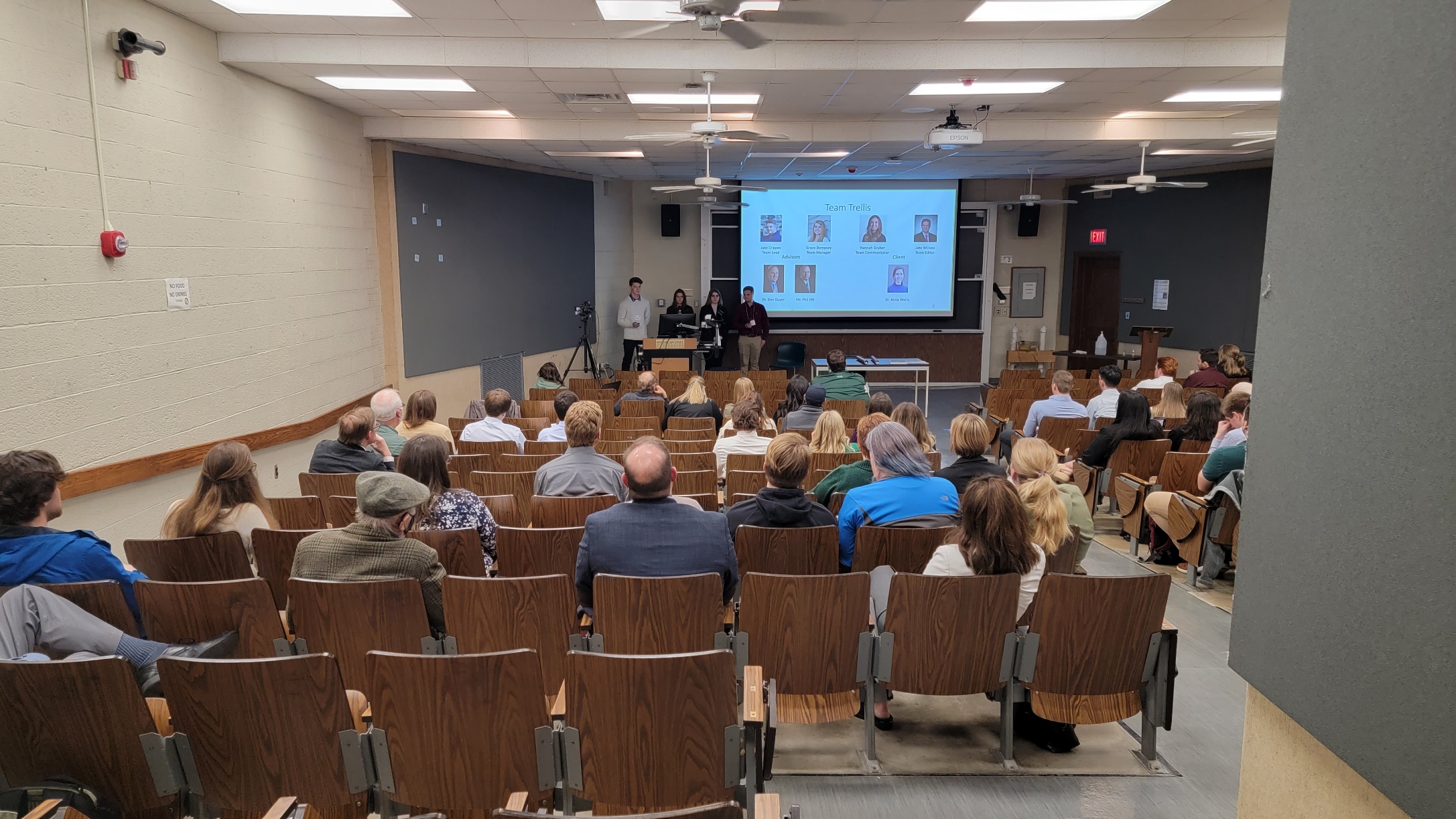
Photo from BE Showcase Senior Design Public Presentations 2023
Hybrid Senior Design Team Presentations (Open to all – no registration required)
- 1:00 Team Eden Lakes - Eden Lakes (under Non-Disclosure Agreement) - Developing phosphorus removal column system using Eden Lakes’ TimberChar™
- 1:10 Team SDP Prevention - Ingham County Parks - Prevention of harmful algal blooms in Soldan Dog Park pond
- 1:20 Team Cyanobacteria Treatment - Ingham County Parks - Treatment of harmful algal blooms in Soldan Dog Park pond
- 1:30 Team IFT - IFT Competition - Nature’s Pulse: Mass producing an innovative pulse-based snack
- 1:40 Team Clemens - Clemens Food Group (under Non-Disclosure Agreement) - Hog feet color improvement
- 1:50 Team Glanbia - Glanbia Nutritionals (under Non-Disclosure Agreement) - Feasibility study of greywater reuse for dairy plant CIPs
- 2:00 Team The Digesters - Consumers Energy (under Non-Disclosure Agreement) - Carbon intensity calculator for Michigan dairy farm renewable natural gas site selection
- 2:10 Break
- 2:20 Team Perrigo – Perrigo (under Non-Disclosure Agreement) - Phosphorus reduction through electrodialysis in pharmaceutical reverse osmosis reject
- 2:30 Team Vida del Río - Dr. Kenny Briceno (Peru) - Affordable water sanitation for poor rural Peruvian Amazon communities
- 2:40 Team EWH Tuberculosis - Dr. Kenny Briceno (Peru) - Implementing a gMNP tuberculosis biosensor in Peru
- 2:50 Team Tillamook - Tillamook (under Non-Disclosure Agreement) - Optimizing a rapid block cooler for cheddar cheese production
- 3:00 Team Grobbel - E. W. Grobbel (under Non-Disclosure Agreement) - Preventing foreign material contamination in corned beef through detection
- 3:10 Team Jiffy - Chelsea Milling Company (Jiffy) (under Non-Disclosure Agreement) - Improving existing oat transport system into food service mixer
- 3:20 Acknowledgements and Wrap up (Dr. Brad Marks & Kevin Kowalk)
3:30 pm - Senior Design student reception 114 Farrall
2025 Senior Design Projects and Teams
Team Cyanobacteria Treatment - Ingham County Parks - Treatment of harmful algal blooms in Soldan Dog Park pond
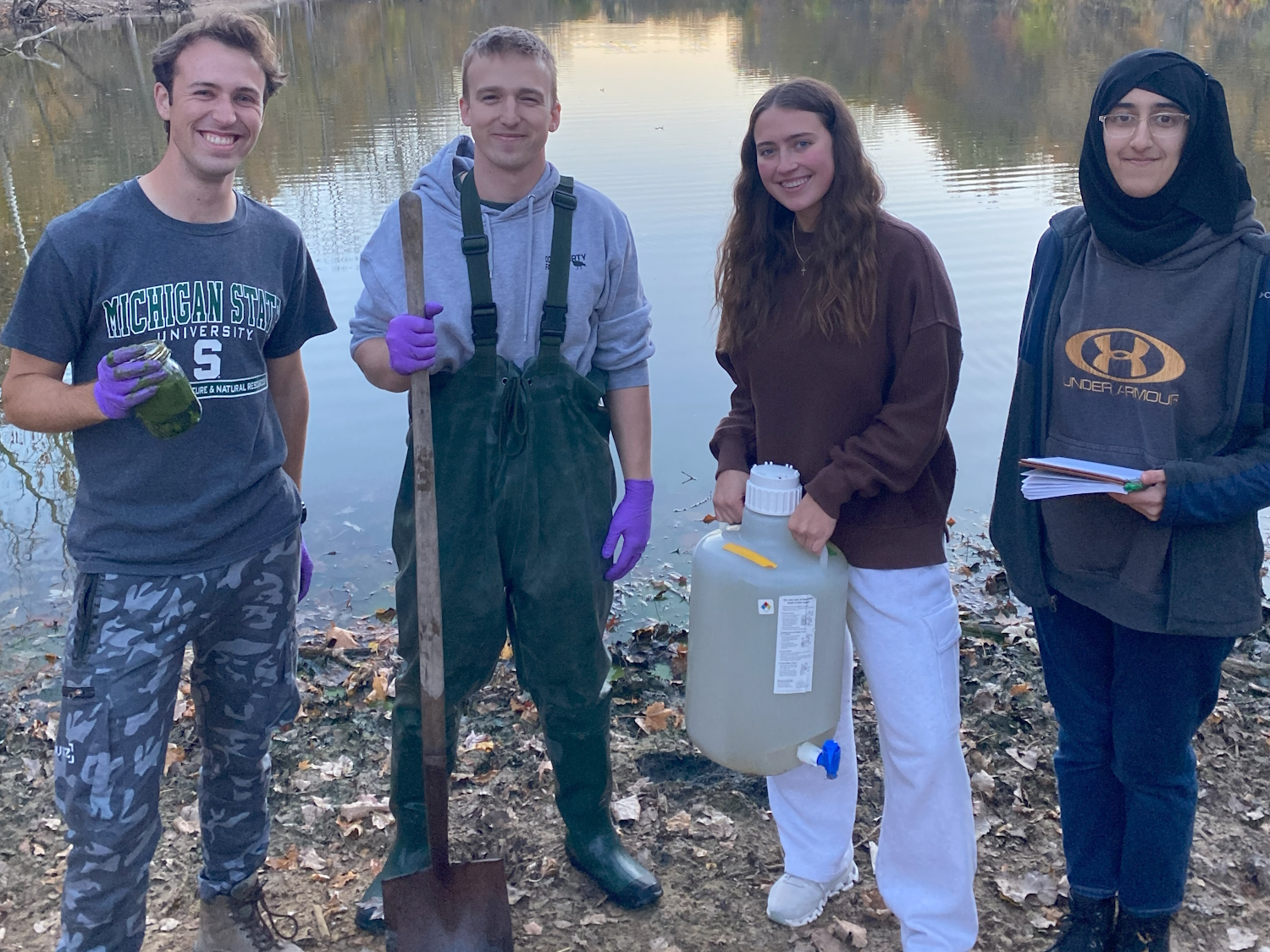
Sponsor – Ingham County Parks
Faculty Advisor – Dr. Dawn Dechand
Since 2019, large green algal blooms have repeatedly appeared in a local Lansing dog park, Soldan Dog Park. Because cyanobacteria was suspected in the blooms, concerns arose about toxins affecting dog health, prompting the park to close the pond. Ingham County Parks contacted Michigan State University and project advisor Dawn Dechand. From pond water samples, the team identified multiple toxin-producing cyanobacteria and found high levels of phosphorus in the pond. The team proposed a series of floating treatment wetlands (FTWs) as an effective way to remediate pollutant levels, removing nearly 418 g of phosphorus/year at a cost of ~$22,000. The team successfully developed and tested a prototype to optimize the final design.
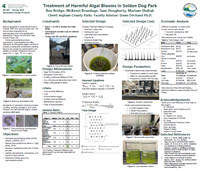
Team SDP Prevention - Ingham County Parks - Prevention of harmful algal blooms in Soldan Dog Park pond

Sponsor – Ingham County Parks
Faculty Advisor – Dr. Dawn Dechand
Harmful algal bloom (HAB) events are increasing in prevalence at Soldan Dog Park Pond. This causes numerous park closures across multiple seasons. The leading cause of HAB events is excessive nutrients, specifically phosphate. This project aims to prevent HAB events at Soldan Dog Park Pond by controlling levels of phosphate entering the pond via stormwater inlet pipes. After measuring the phosphate in the pond and doing predictive modeling with OpenHydroQual, the chosen design solution is a water control structure with an iron-enhanced media filter. One filter is expected to cost $1,500, replaced annually, and the first 10-years cost is $96,100.

Team The Digesters - Consumers Energy (under Non-Disclosure Agreement) - Carbon intensity calculator for Michigan dairy farm renewable natural gas site selection
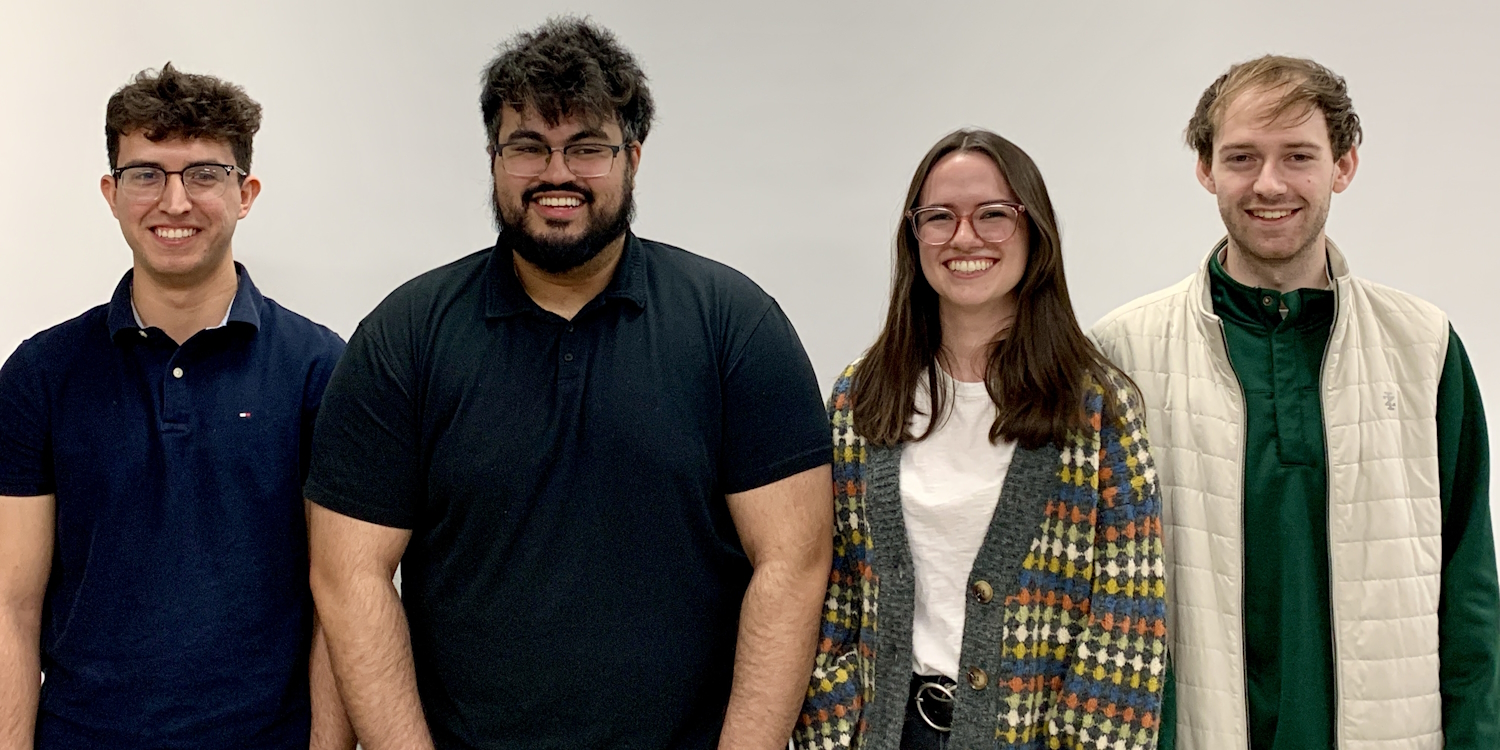
Sponsor – Consumers Energy (under Non-Disclosure Agreement)
Faculty Advisor – Dr. Daniel Uyeh
Consumers Energy is establishing additional partnerships with Michigan dairy farmers. Dairy manure can be used to generate renewable natural gas (RNG) through anaerobic digestion. Producing RNG from dairy manure can have significantly negative carbon intensity (CI) scores, which indicates a reduction in greenhouse gas emissions. This reduction can offset Consumers’ other operations such as conventional natural gas production. To decide if a dairy farm is suitable for a project, many logistic and economic factors are considered. To aid the decision process the team designed an Excel calculator to estimate RNG production and CI score for a potential project location. The model is informed by the USDA Quantifying Greenhouse Gas Emissions and Sinks Handbook, R&D GREET Model, and Joseph Mangino EPA Report. The user interface is coded in Excel VBA.
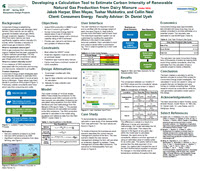
Team IFT - IFT Competition - Nature’s Pulse: Mass producing an innovative pulse-based snack
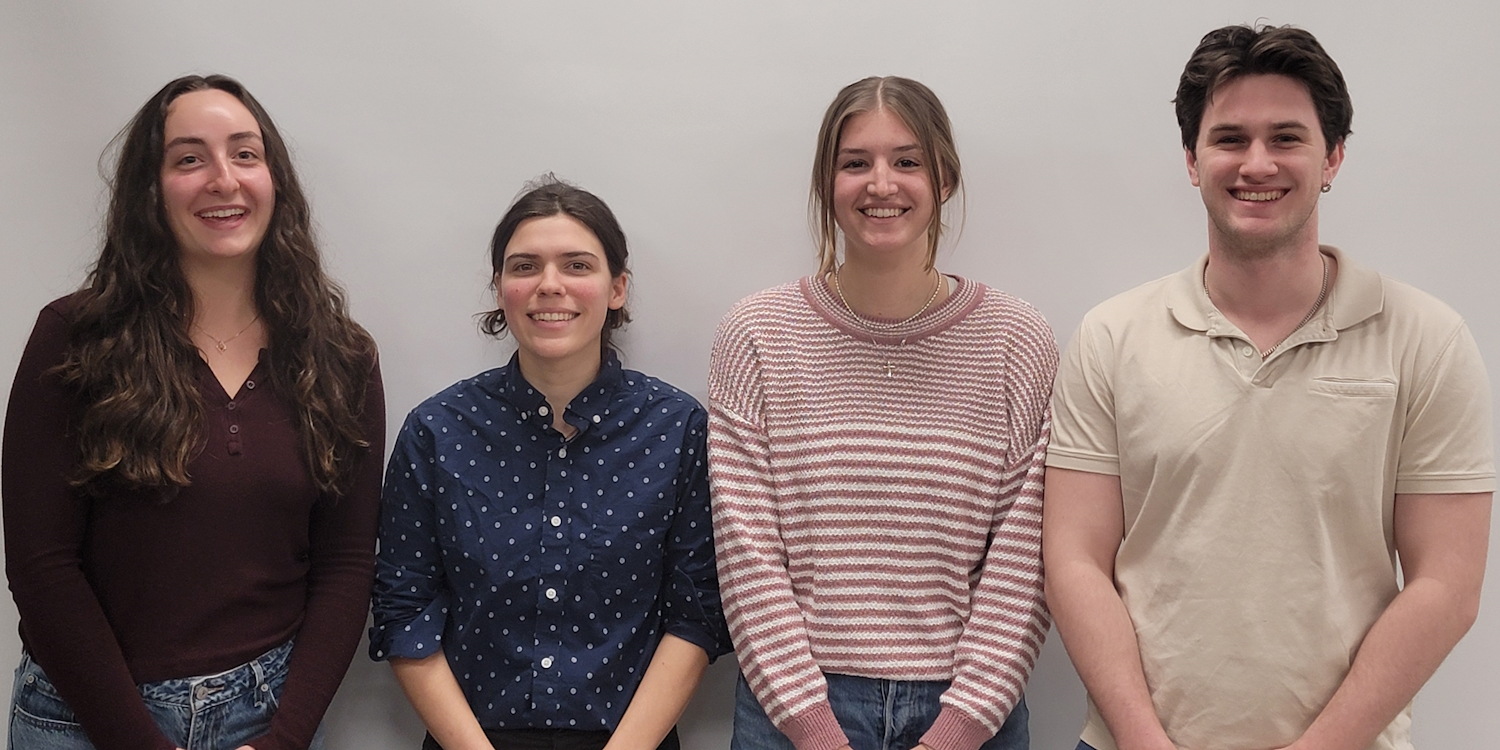
Sponsor – IFT Competition
Faculty Advisor – Dr. Kirk Dolan
Team IFT developed a full process line for an innovative pulse-based trail-mix snack product. The product, developed by the Food Science Product Development Team, combines flavored bean-based crackers with tasty mix-ins. Design components include an optimized mathematical model of vacuum drying, an economic analysis of the processing line, as well as a sustainable packaging alternative. Vacuum drying is the primary focus of our design as it is the bottleneck of the processing line and there is potential for optimization. Our break-even point is projected to be under three years with a production cost under 40% of market price.
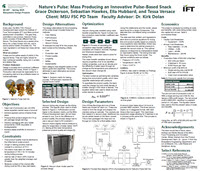
Team Clemens - Clemens Food Group (under Non-Disclosure Agreement) - Hog feet color improvement
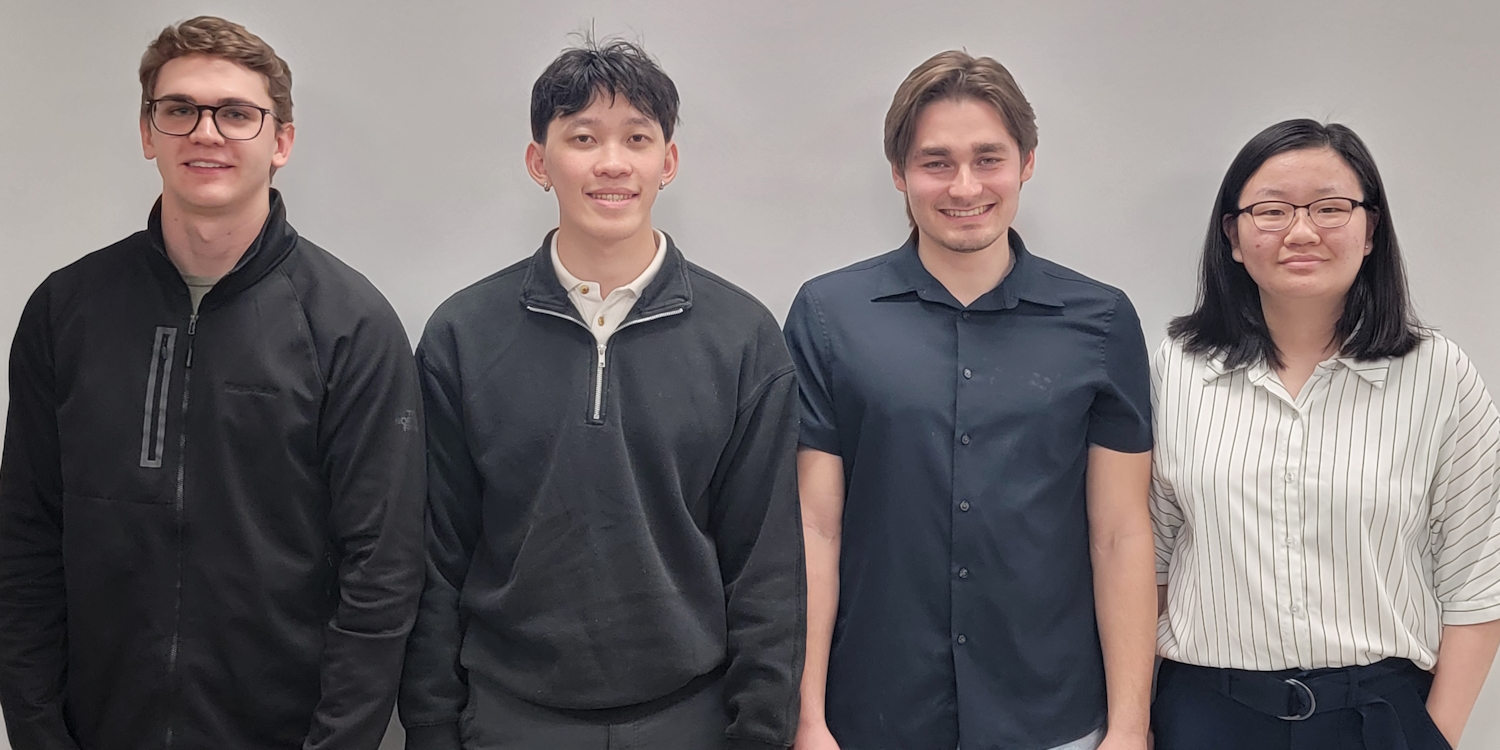
Sponsor – Clemens Food Group (under Non-Disclosure Agreement)
Faculty Advisor – Dr. Bahar Aliakbarian
Team Clemens has selected to implement the solution of replacing the vertical scalder in the Coldwater facility with a horizontal scalder. The horizontal scalder will mitigate blood staining and blood pooling, the main causes for discoloration in the Coldwater facility. The new horizontal scalder, produced by Frontmatec, will have an initial capital cost of $2,250,000. By reducing front foot discoloration, the Coldwater facility will save $364,530 annually. This creates a payback period of 6.3 years.
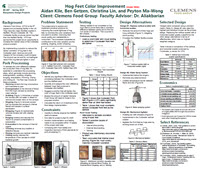
Team Eden Lakes - Eden Lakes (under Non-Disclosure Agreement) - Developing phosphorus removal column system using Eden Lakes’ TimberChar™
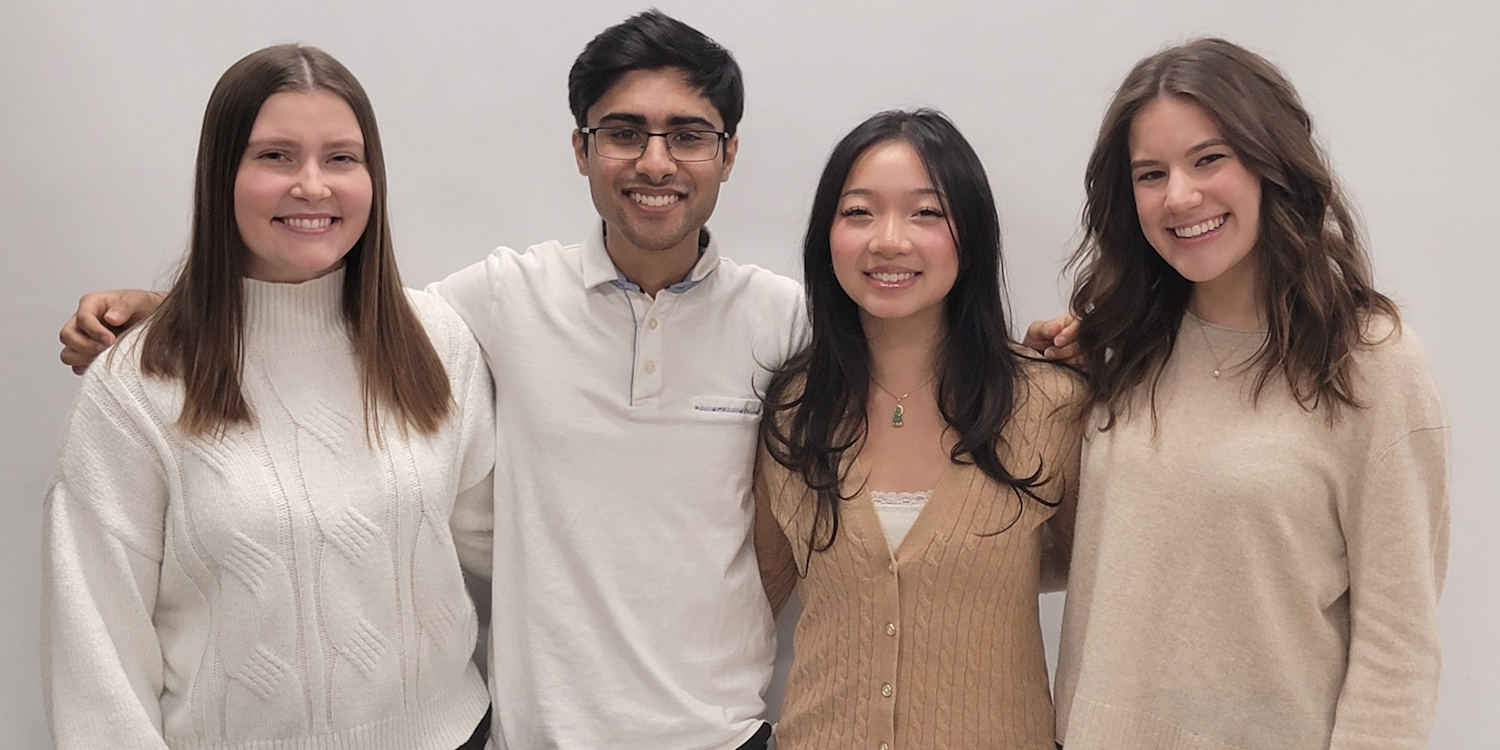
Sponsor – Eden Lakes (under Non-Disclosure Agreement)
Faculty Advisor – Dr. Younsuk Dong
This project focused on designing a phosphorus removal system using the biochar product TimberChar™, manufactured by Eden Lakes. The design consists of a column filtration system for phosphorus removal at a eutrophic wastewater lagoon, “Lake Leslie.” The final design pumps wastewater through a series of columns containing TimberChar™, and a layer of pea gravel used to prevent media loss. This modular system maximizes phosphorus adsorption with improved scalability and transportability. Expected outcomes include meeting EGLE effluent discharge standards of 1 mg/L of phosphorus, and TimberChar™ media loss of less than 5% by weight. The team’s design supports sustainable water management for MI eutrophic lakes.
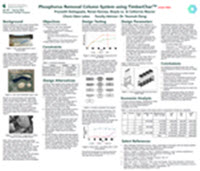
Team Glanbia - Glanbia Nutritionals (under Non-Disclosure Agreement) - Feasibility study of greywater reuse for dairy plant CIPs
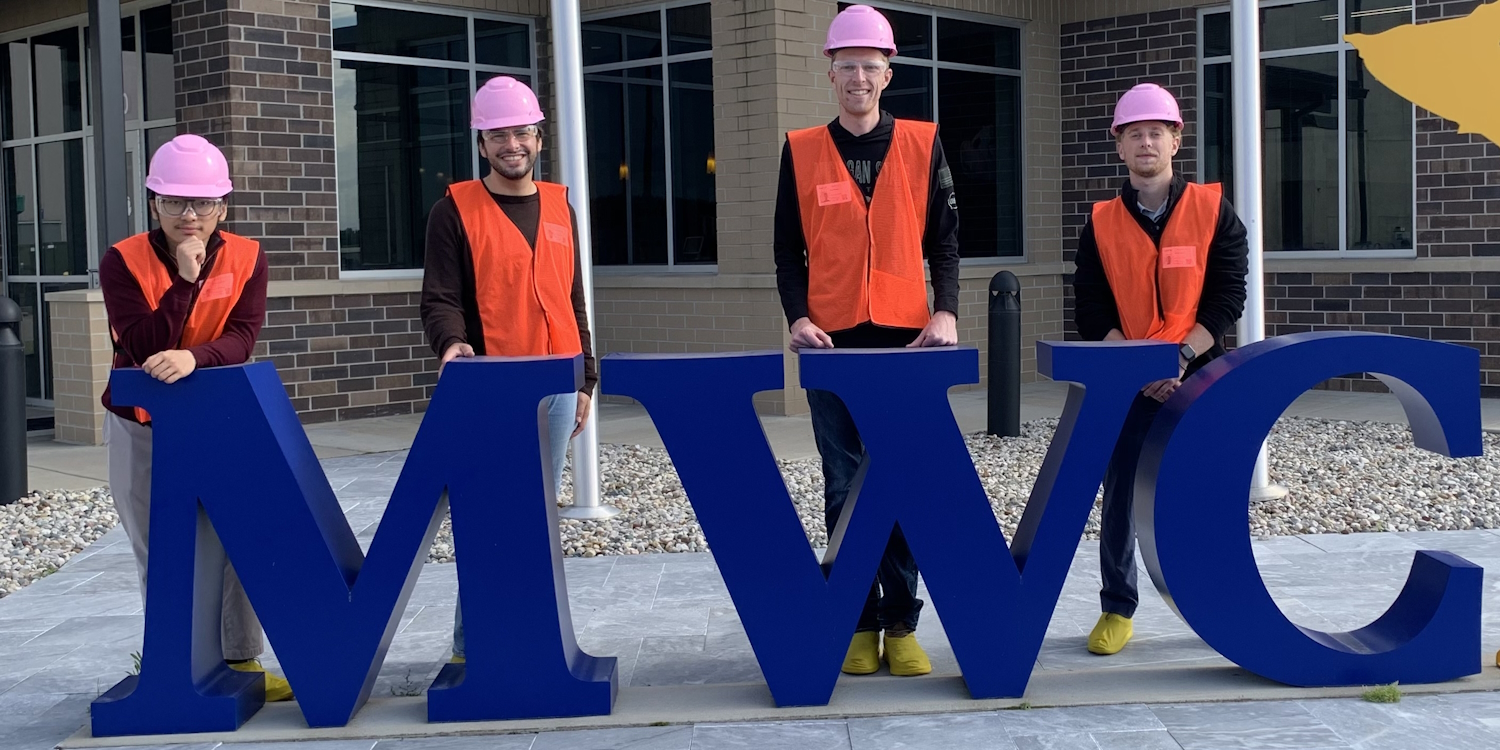
Sponsor – Glanbia Nutritionals (under Non-Disclosure Agreement)
Faculty Advisor – Dr. Wei Liao, PE
Glanbia is a multinational dairy processor with a large production plant in St. Johns, Michigan. Glanbia has a company-wide goal to reduce freshwater use by 10%. To achieve this, Glanbia tasked the team with exploring the feasibility of reusing treated wastewater to reduce freshwater intake. The team analyzed Glanbia's effluent wastewater samples and determined that reverse osmosis (RO)is the most effective solution for meeting FDA standards. Using RO, the team plans to recycle 20% of Glanbia’s wastewater discharge at this plant. This amount of recycled water will eliminate 100% of the municipal water withdrawn from the city of St. Johns used for external non-food contact surfaces Clean-in-Place (CIP) operations (i.e., floor and wall cleaning, pipe exterior cleaning).
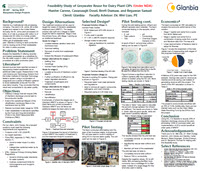
Team Grobbel - E. W. Grobbel (under Non-Disclosure Agreement) - Preventing foreign material contamination in corned beef through detection
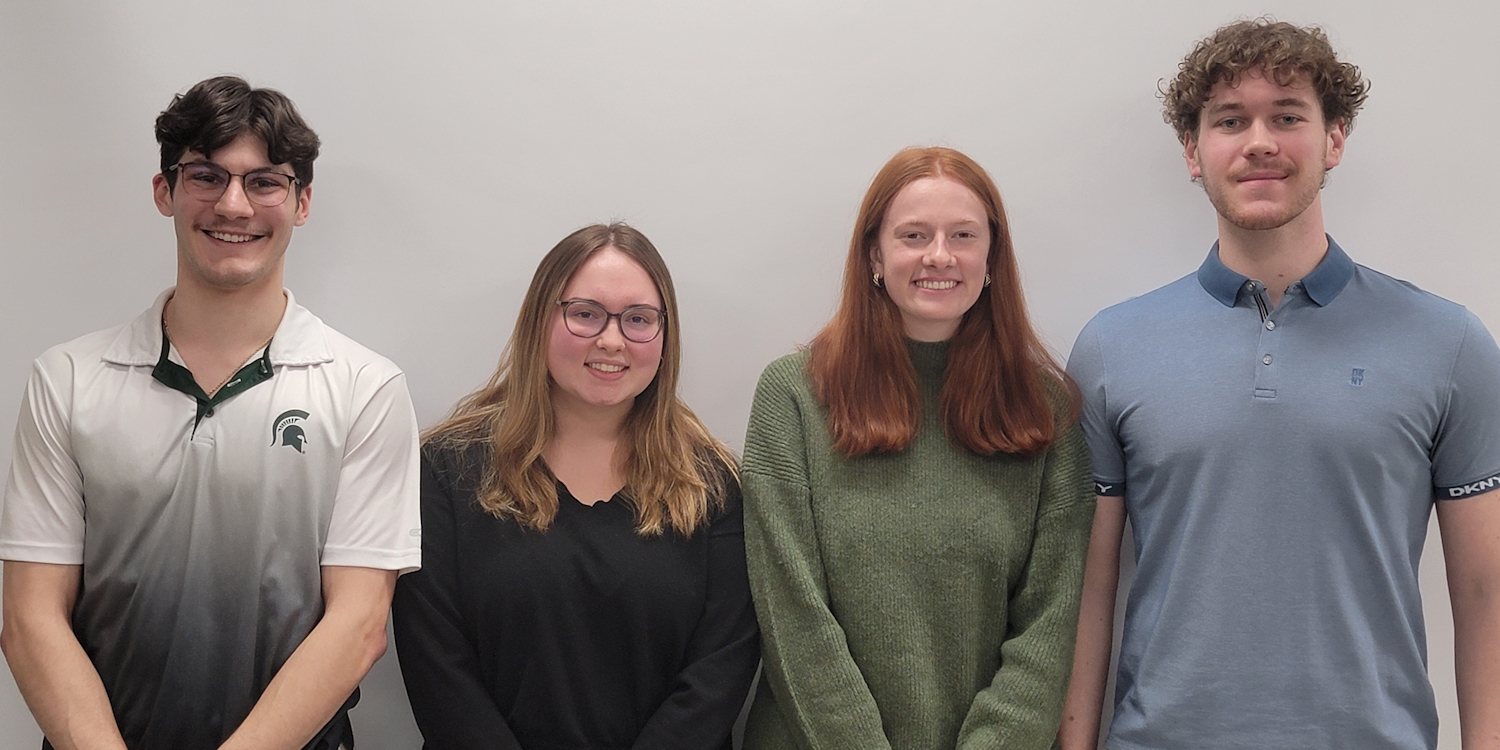
Sponsor – E. W. Grobbel (under Confidential Disclosure Agreement)
Faculty Advisor – Dr. Ilce Medina Meza
The goal of this project is to prevent the risk of Foreign Material Contamination (FMC) in a corned beef processing facility. FDA Hazard Analysis Critical Control Point (HACCP) guidelines were used to identify the top contamination risks throughout the facility. Implementing new detection and prevention methods within specified Critical Control Points (CCPs) including X-ray scanning and vinyl curtain segregation are recommended. These implementations will decrease Foreign Material Contamination by 50% in the direct-to-deli process once installed, including a recommended selling price increase of $2.47 per unit to eliminate out-of-pocket costs if financed over the expected machine lifetime of 5 years.
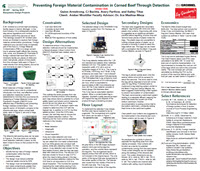
Team Tillamook - Tillamook (under Non-Disclosure Agreement) - Optimizing a rapid block cooler for cheddar cheese production
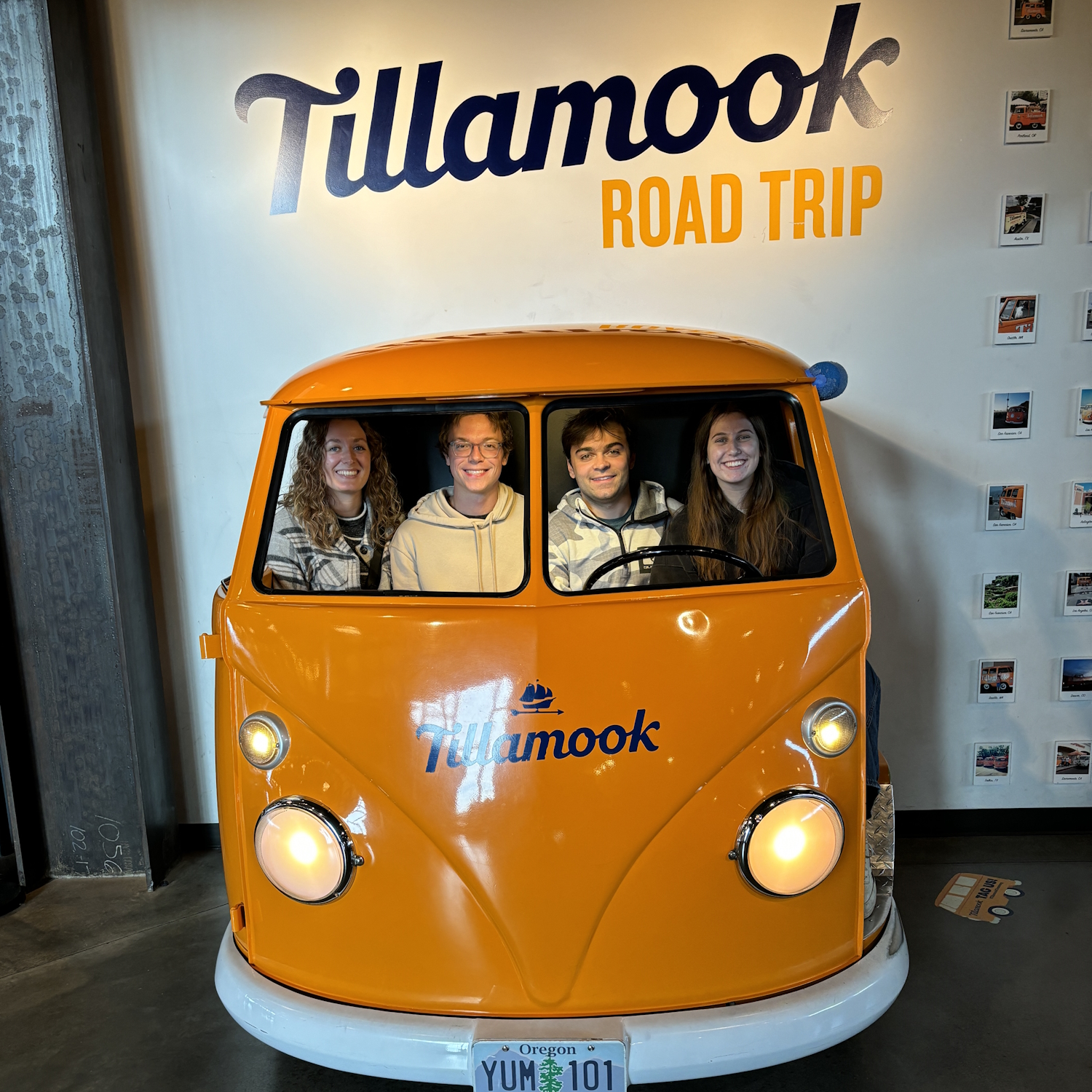
Sponsor – Tillamook (under Non-Disclosure Agreement)
Faculty Advisor – Dr. Ian Hildebrandt
Market demand for quality cheddar cheese is increasing, and the Tillamook County Creamery Association is poised to meet it. However, improperly cooled cheese can cause disruptions in the taste and texture, resulting in downgrading of the cheese and financial losses; Tillamook’s high-quality standards must be met without compromise. Issues in the rapid cooling room were identified to provide solutions to determine the optimal cooling temperature and air velocity for cheddar cheese. The team is proposing solution recommendations interpreted from a MATLAB model using finite element method including decreasing air temperature and addition of fans. Overall projected savings are ~$100,000.

Team Perrigo – Perrigo (under Non-Disclosure Agreement) - Phosphorus reduction through electrodialysis in pharmaceutical reverse osmosis reject
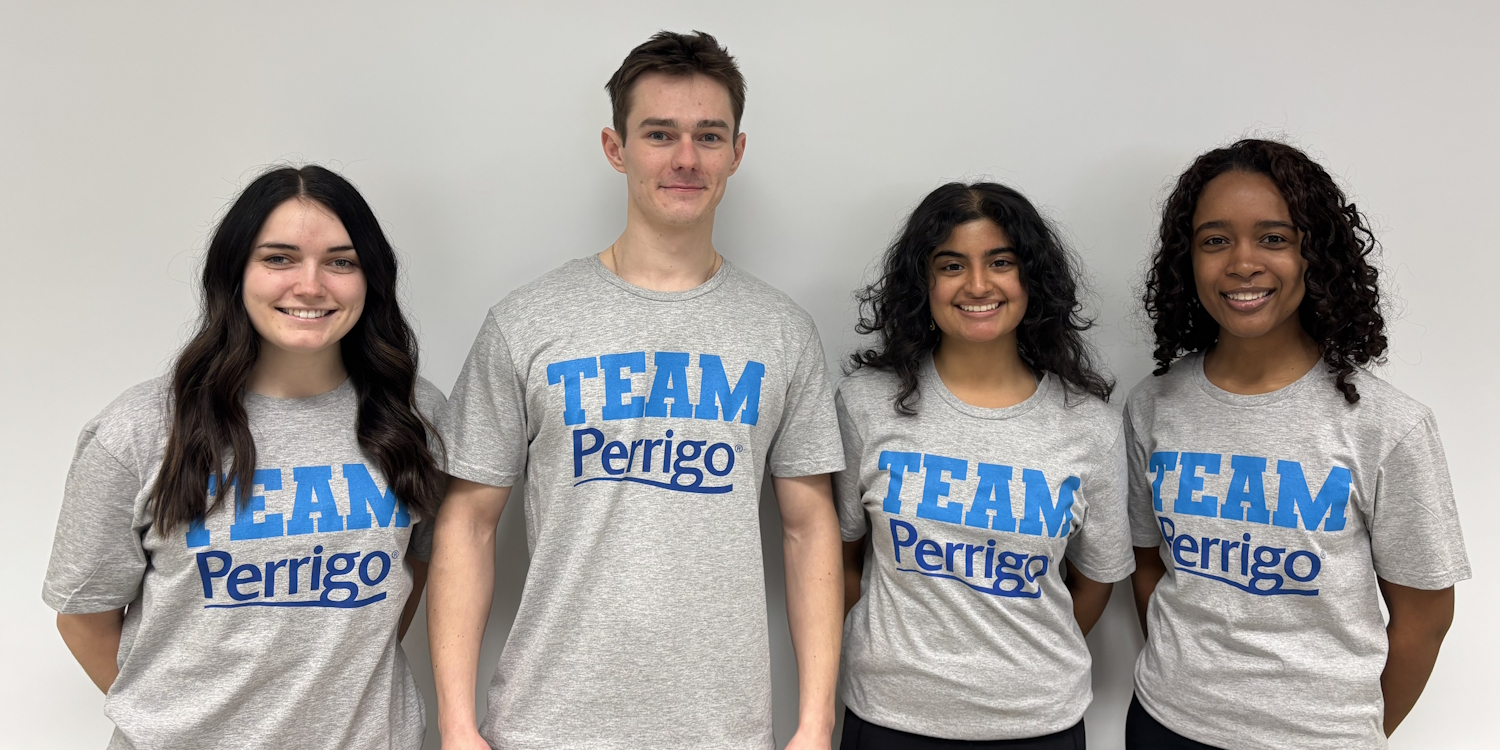
Sponsor – Perrigo (under Non-Disclosure Agreement)
Faculty Advisors – Dr. Jade Mitchell and Dr. Emily Julien
Perrigo is looking to reduce the cost of wastewater treatment for their Reverse Osmosis (RO) reject water at their Allegan, Michigan plant. The RO system increases the phosphorus concentration in the reject water, exceeding the Environmental Protection Agency limit. Perrigo is required to send the reject water to a treatment plant instead of the stormwater system. This method has proven to be more costly. The team proposes the implementation of an in-house electrodialysis system to remove phosphorus so it can be discharged to the stormwater system. This system aims to recover 75% of effluent phosphorus and cut the current operating cost by a minimum of 50%.

Team Jiffy - Chelsea Milling Company (Jiffy) (under Non-Disclosure Agreement) - Improving existing oat transport system into food service mixer
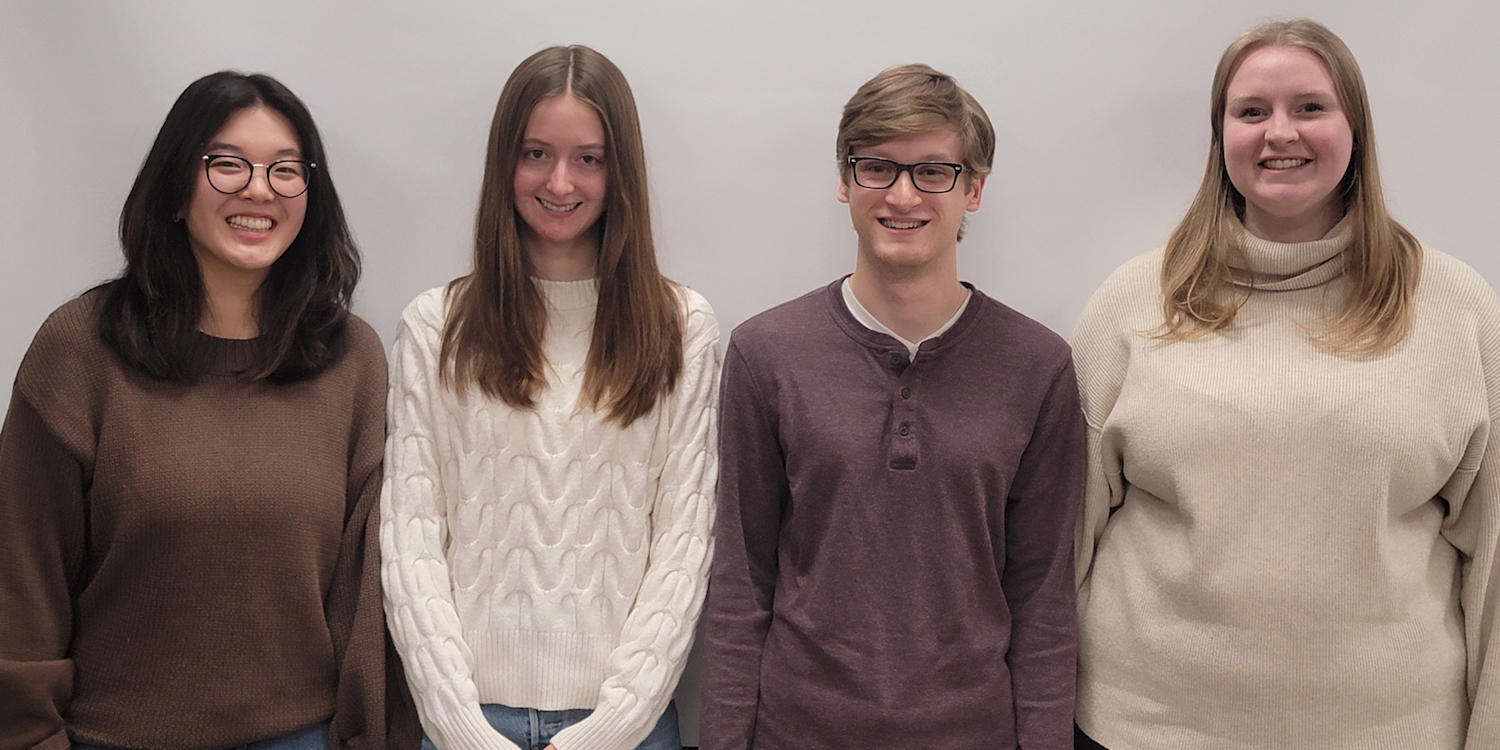
Sponsor – Chelsea Milling Company (Jiffy) (under Non-Disclosure Agreement)
Faculty Advisor – Dr. Dr. Yan “Susie” Liu
Chelsea Milling Company (CMC) uses a super-sack unloading system and screw auger to add ingredients into their Food Service mixer. Team Jiffy has been asked to create a design that improves cleaning efficiency and reduces ingredient loss from CMC’s current system. The final design includes the addition of a new hingeless screw auger alongside the pre-existing screw auger for oat application. This system will reduce ingredient loss in transport by 100%, and reduce cleaning time by 10%, and maintain the current throughputs of the plant.
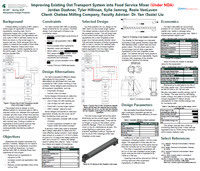
Team EWH Tuberculosis - Dr. Kenny Briceno (Peru) - Implementing a gMNP tuberculosis biosensor in Peru
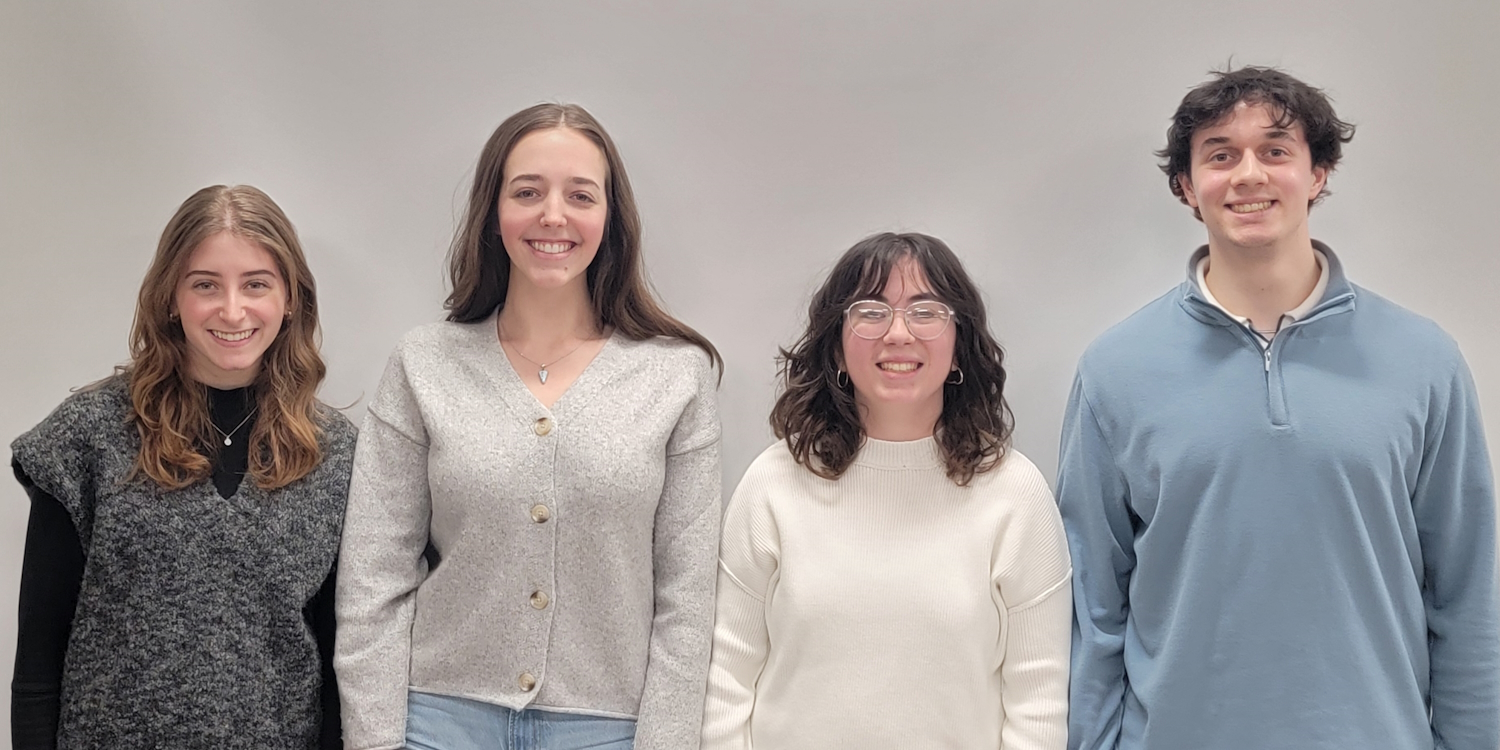
Sponsor – Dr. Kenny Briceno (Peru)
Faculty Advisor – Dr. Vangie Alocilja
Team EWH Tuberculosis collaborated with Engineering World Health and a local physician in Peru, Dr. Kenny Briceno, to implement a diagnostic gMNP Tuberculosis biosensor in Belén, Peru. Implementation of the biosensor improves current test sensitivity from 60% to 99.7% and reduces the wait time for accurate results from weeks to 30 minutes. To ensure seamless integration into the clinic, the team developed procedural guidelines and standard operating procedures (SOPs) to optimize workflow and enhance patient safety. To ensure accessibility, the guidelines are located within a publicly available website. The biosensor test remains cost-effective, at a cost of $2.27.

Team Vida del Río - Dr. Kenny Briceno (Peru) - Affordable water sanitation for poor rural Peruvian Amazon communities

Sponsor – Dr. Kenny Briceno (Peru)
Faculty Advisor – Dr. Vangie Alocilja
The Amazon River, the primary drinking water source for village communities near Iquitos, Peru, is subject to contamination from sources such as deforestation, improper mining, and waste disposal practices. To mitigate waterborne illness infection rates linked to the decreasing water quality, the team designed a multi-barrier approach: sedimentation, biosand filtration, and chlorination. This household-scale system was designed to remove 95% of pathogens, >85% heavy metals, and >85% turbidity. The annual costs associated with operation are less than 10% of the annual income of the communities and utilize local resources, ensuring accessibility.
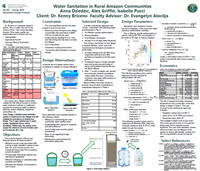



 Print
Print Email
Email